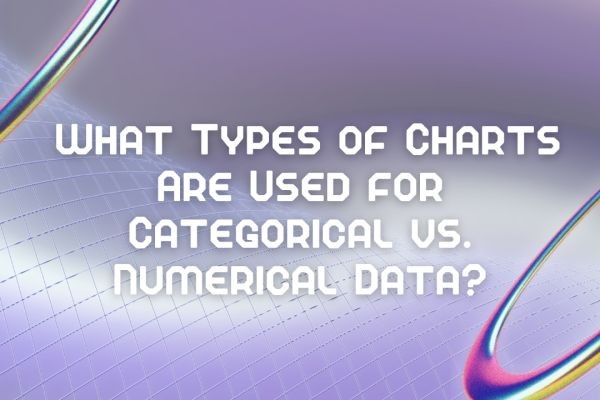Data visualization is a cornerstone of effective data analysis and communication. Choosing the right type of chart depends on the nature of your data: categorical or numerical. Let’s explore these data types and the charts best suited for each.
Understanding Categorical and Numerical Data
Categorical Data: This data represents distinct categories or groups. Examples include colors, brands, or types of products. Such data is qualitative and often non-numerical.
Numerical Data: This data represents measurable quantities. It can be divided into two types:
- Discrete: Countable values like the number of students.
- Continuous: Any value within a range, such as height or temperature.
Charts for Categorical Data
Categorical data is best visualized using charts that highlight comparisons or proportions between categories. Here are the top options:
- Bar Charts
- Use Case: Comparing categories.
- Description: Each bar represents a category, and its length reflects the frequency or value.
- Example: Comparing sales figures across different regions.
2. Pie Charts
- Use Case: Showing proportions or percentages.
- Description: A circular chart divided into slices, with each slice representing a category’s share.
- Example: Visualizing market share of various brands.
3. Stacked Bar Charts
- Use Case: Displaying sub-category proportions within categories.
- Description: Each bar is divided into segments to show breakdowns.
- Example: Sales by product categories across different quarters.
4. Clustered Bar Charts
- Use Case: Comparing categories and sub-categories.
- Description: Groups of bars for each category, representing sub-categories.
- Example: Test scores of students across different subjects.
5. Pareto Charts
- Use Case: Highlighting the most significant categories.
- Description: Combines a bar chart and a cumulative line graph.
- Example: Identifying the top reasons for customer complaints.

Charts for Numerical Data
Numerical data demands charts that capture trends, distributions, and relationships. Here are the go-to options:
- Histograms
- Use Case: Displaying data distribution.
- Description: Similar to bar charts but used for continuous data. Bars represent intervals of data.
- Example: Showing the distribution of student test scores.
2 . Line Charts
- Use Case: Highlighting trends over time.
- Description: Points connected by lines to show changes in values.
- Example: Tracking monthly revenue over a year.
3. Scatter Plots
- Use Case: Exploring relationships between two variables.
- Description: Points plotted on an X-Y axis to show correlations.
- Example: Analyzing the relationship between advertising spend and sales.
4. Box Plots (or Box-and-Whisker Plots)
- Use Case: Summarizing data distribution.
- Description: Shows median, quartiles, and outliers.
- Example: Comparing income levels across departments.
5. Area Charts
- Use Case: Visualizing cumulative trends.
- Description: Similar to line charts but with shaded areas under the lines.
- Example: Cumulative sales over a year.
6. Bubble Charts
- Use Case: Representing relationships among three variables.
- Description: A scatter plot where the size of the bubble represents an additional variable.
- Example: Visualizing profit, revenue, and market share for products.
Mixed Data: Combining Categorical and Numerical Data
When your dataset contains both categorical and numerical data, you can combine elements of the above charts:
- Bar Charts with Numerical Annotations
- Example: Displaying sales figures (numerical) by region (categorical).
2. Box Plots by Category
- Example: Comparing test scores (numerical) across schools (categorical).
3. Heatmaps
- Example: Showing website traffic (numerical) by hour and day (categorical).
Best Practices for Chart Selection
- Understand Your Data: Clearly define whether your data is categorical, numerical, or mixed.
- Focus on Your Audience: Choose charts that make insights easy to understand.
- Use Color Wisely: Avoid overwhelming viewers; use colors to highlight key points.
- Label Clearly: Include descriptive titles, axes labels, and legends.
Conclusion
The choice of charts plays a crucial role in data storytelling. By aligning your chart type with the nature of your data, you can present your insights effectively and make your message resonate with your audience.
For More Details Visit : https://nareshit.com/courses/data-science-online-training
Register For Free Demo on UpComing Batches : https://nareshit.com/new-batches








